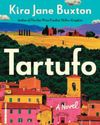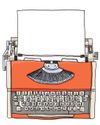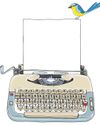
To invoke this sense of immersive reality, we need to conjure our written world with evocative, multi-sensory detail that immediately resonates with our reader. This is true of every genre, from nonfiction through realistic fiction, and even the created worlds of science fiction and fantasy.
To write it, we must know it. To know it, we must observe it with all of our senses.
However, even when we spend quite a lot of time somewhere, it can be surprisingly hard to truly observe a place. Even something that strikes us as profound or unforgettable can be difficult to recall in detail after the moment has passed.
With nothing more than a pen and a notebook, nature journaling can help you slow down and engage in child-like fascination—and create a reference you can call upon to bring your reader into the worlds you build on the page.
GET STARTED
Start with what you have, and try new things as they strike your fancy. The perfect tool is the one that you will use.
What to Bring
At the most basic level, all you need is something to write and draw with and a notebook to write and draw in. Choose a notebook you can use comfortably when sitting down and writing on your lap. If your notebook isn't hardbound, a clipboard or other hard surface will help.
Creature comforts: a hat, sunscreen, bug repellant, snacks, and a beverage.
Nice, but not necessary: a pair of small binoculars, a hand lens, a small ruler or measuring tape, a small set of watercolors or colored pencils, and a camp stool.
An old backpack or tote bag is handy to carry your things. Don't use anything you would regret getting some mud or dirt on. We're going outside; that's where mud and dirt live.
What to Wear
この記事は Writer’s Digest の July - August 2024 版に掲載されています。
7 日間の Magzter GOLD 無料トライアルを開始して、何千もの厳選されたプレミアム ストーリー、9,000 以上の雑誌や新聞にアクセスしてください。
すでに購読者です ? サインイン
この記事は Writer’s Digest の July - August 2024 版に掲載されています。
7 日間の Magzter GOLD 無料トライアルを開始して、何千もの厳選されたプレミアム ストーリー、9,000 以上の雑誌や新聞にアクセスしてください。
すでに購読者です? サインイン

What Is Your Story Question?
Revision and editing advice to take your first draft to the next level.

Writing for the People We Hope to Become
Elisa Stone Leahy's new middle-grade novel, Mallory in Full Color, tackles the in-between moments of adolescence, when who we are and who we want to become collide.

Creating Community
Whether hot off the presses or on the shelves for years, a good book is worth talking about.

Pat Barker
The Booker Prize-winning author of Regeneration shares the role characters play in developing novel ideas and explains what appeals to her about reimagining mythology.

How to Write in Different Genres
Emiko Jean and Yulin Kuang share tips and strategies for how they successfully write in different genres and mediums.

The Shortest Distance Between Two Points
Ten tips for writing a novel with 100-word stories.

Mayfly Marketing
How to sell your novel in a short-attention-span world.

"You'll be a great essay".
How to write six types of personal essays by finding the funny in your life.

The Idea Factory
Tired of staring at an empty screen? Unlock your inner fiction generator with these surprising inspiration techniques.

Seinfeld Was Right: That's a Story
Use mundane moments from everyday life to create stories that pack a punch.